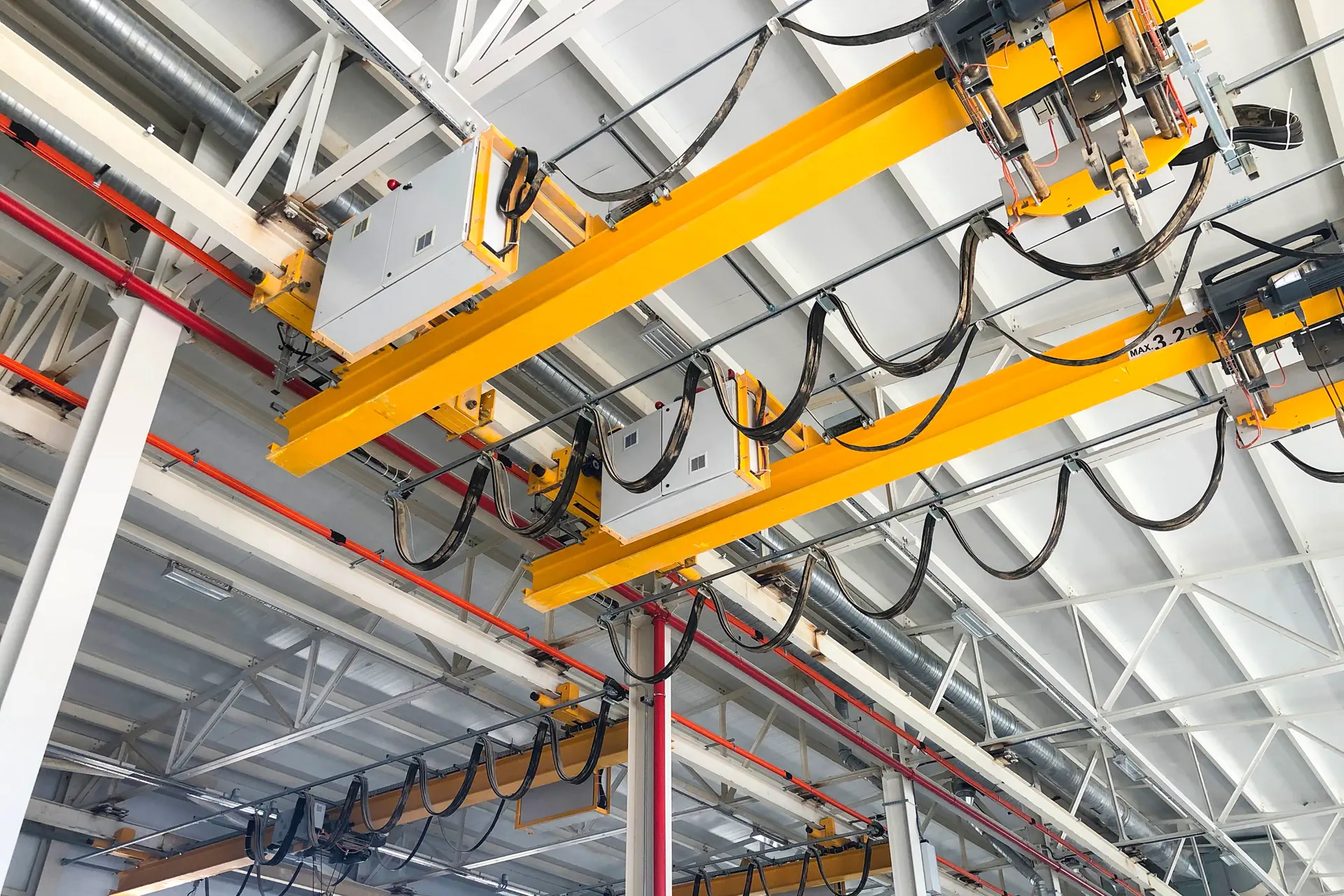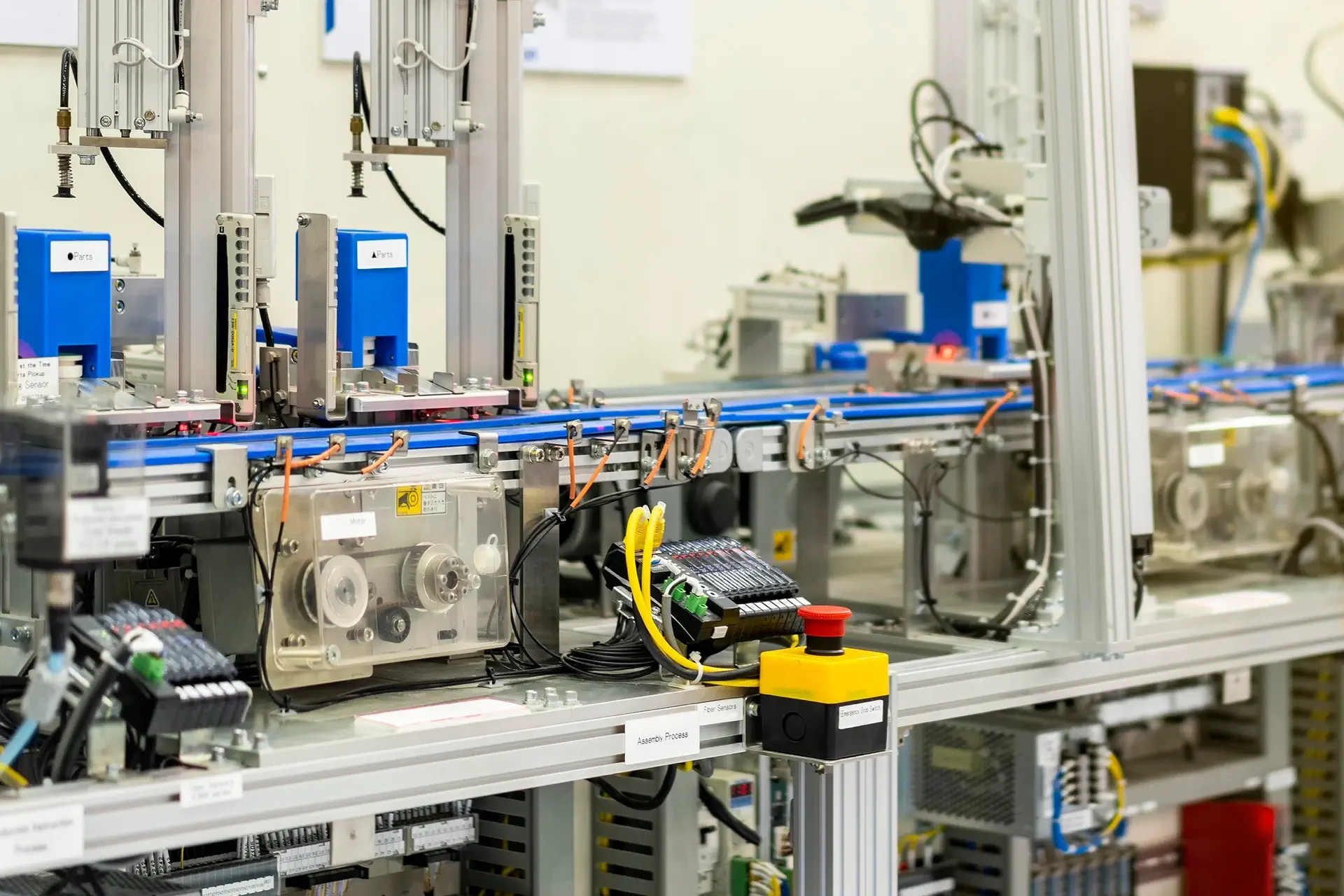
- Real-time WLAN for mobile robots and moving machines
- Reliable real-time transmission with guaranteed latency
- Designed for Industrial Ethernet, including Safety
- Over large areas with zero-latency roaming
Developed for Industrial Machines
Connection in Real-Time. Guaranteed.
Conventional Wi-Fi was designed for people, not for machines. When multiple wireless devices are involved and movement occurs, delays can bring systems to a halt.
For industrial control systems, the maximum latency and minimum data rate in the worst case are what matter — not just the advertised best values. We promise nothing we cannot uphold in 99.9999% of cases.
AGV / AMR
Rail Vehicles
Retrofit
Special-Purpose
Events
Amusement Rides
Determinism for Hard Real-Time
Guaranteed Latency and Data Rate
Real-time applications must respond to events within a defined time. Messages must arrive on time — not sometimes, but always.
A proprietary protocol coordinates who can transmit and when. This ensures latency and data rate are fixed in advance, with no surprises, regardless of the number of devices.
Redundancy in frequency and space ensures high service quality even under challenging conditions.
Seamless Coverage
Roaming without Interruptions
Conventional Wi-Fi access points must be carefully positioned and configured to avoid interference. When a client moves between access points, brief interruptions occur.
BlitzFunk access points work together. They can share the same channels without interfering with each other. Clients move seamlessly between access points without impacting latency or data rate.

Easy Installation
Set Up in One Minute
Industrial wireless systems can be complicated to set up. Special software and lengthy procedures are not necessary.
Turn on the devices, open the web interface, and get started. Clients are automatically discovered and configured wirelessly. For special requirements and integrations, an HTTP API is available.
Integrated Monitoring
Clarity in Case of Failure
When a system is down, time is critical. Troubleshooting consumes time, effort, and money. Knowing where data is lost is essential. Was it the wireless network or something else?
For each client, packet loss is precisely recorded, along with the reason. Signal strength is monitored in all directions by all devices. BlitzFunk eliminates uncertainty once and for all.

Enough Spectrum for Brownfield Installations
New Spectrum
Wi-Fi spectrum at 2.4 GHz and 5 GHz is limited. At many sites, all channels are already occupied, making new installations nearly impossible.
BlitzFunk supports the often-unused 6 GHz band and the rarely used SRD channels at 5.8 GHz. This enables large networks with many participants without interfering with existing installations.
Secure by Design
Always Encrypted and Authenticated
Common functional safety protocols do not offer cryptographic protection. The responsibility for security falls on the underlying network.
Strong keys are automatically generated during setup. Insecure configurations are technically impossible. This allows users to focus on other tasks.












